Photographers have always been drawn to filling stations. Captured beside a desert road or along the mythical Route 66 of the western United States, “gas” stations have provided the backdrop to images of countless American road trips.
The Irish variety of these roadside emporiums, with shelves filled with everything from yard brushes to shoelaces, haven't caught the imaginations of budding Robert Franks or Jack Kerouacs in quite the same way.
Two white petrol pumps, long out of service but still lovingly maintained, stood sentinel beneath a weathered shop sign. Stopping the car, I took my first photograph of an Irish rural petrol station. I've never been able to drive past one since
Their romantic allure had passed me by too, before a chance encounter more than a decade ago gave me pause for thought. Driving north from Cork through the heart of the country, I chanced upon an old Esso station. Two white petrol pumps, long out of service but still lovingly maintained, stood sentinel beneath a weathered shop sign. Stopping the car, I took my first photograph of an Irish rural petrol station.
I’ve never been able to drive past one since.
My life is spent on the road, driving the length and breadth of the island on various photographic assignments. Covering so many kilometres, you pay attention to the places where fuel is available.
Four decades ago my first teenage job was serving petrol in a little filling station like the one I had captured in my picture. Ten bob’s worth of two star in a Ford Anglia or Morris Oxford carried the customers back and forth to work for a week in those days.
Many of the little country stations I’ve come across in Cavan, Tipperary and Cork seem to speak of that older time.
Essential features of our roadside architecture, few have canopies to offer protection from the elements. Lonely pumps stand alongside Marian shrines or crossroads pubs trying to ride the same waves of change. Sadly, more and more of these little wayside oases of fuel have had to hang up their nozzles.
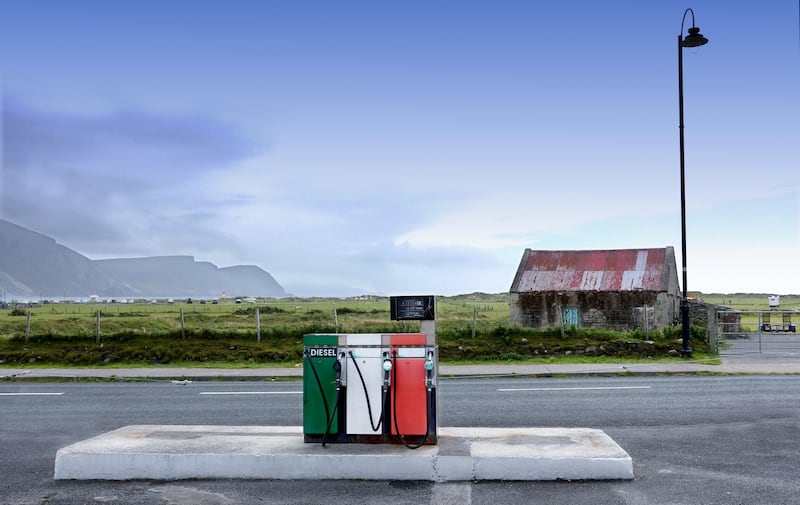
In 2008 the Irish Petroleum Industry Association announced that almost half of all Irish petrol stations had closed down over the previous decade, a drop from 2,143 to 1,092.
Restrictive health and safety legislation has virtually banned the sale of inflammable fuels from roadside pumps. The refusal of oil companies to deliver the smaller amounts of fuel required by country stations is criticised by many struggling proprietors.
“You get far more profit out of a cup of coffee than a litre of petrol,” is a regular refrain I hear as they watch the burgeoning forecourts of Applegreens and Circle Ks capture trade they have lost.
Sadly, there are many derelict forecourts in my portfolio of pictures. Stumbling across such forlorn scenes in the midst of the recession seemed symbolic
The Irish Petroleum Industry Association has lamented that sales of coffee, croissants, crisps and Coke offset the tiny margins now involved in fuel retail. A desolate vision has emerged in the wake of the disappearance of so many of the traditional filling stations.
"What we're looking at now is potential petrol deserts in remote areas, as the individual service stations serving outlying areas disappear," says Conor Faughnan of AA Roadwatch.
Sadly, there are many derelict forecourts in my portfolio of pictures. Stumbling across such forlorn scenes in the midst of the recession seemed symbolic.
Stopping beside a For Sale sign on the main street shop of Clones, Co Monaghan early one Sunday morning in 2008, I was challenged by an elderly cattle dealer.
“You’ll make a bid for it,” he smiled as he watched me photograph the tattered “Euros to Pounds” conversion table. His take on the dire financial situation of the moment seemed convincing.
"We never had money in Ireland before," he explained. "But the last 10 years there has been money everywhere. Lots of it. So much we didn't know what to do with it and it went to our heads. We made fools of ourselves."
Initially I captured the stations as I went about my business. Nowadays I head off on what my friends laughingly call filling-station missions, seeking out likely locations at remote crossroads or isolated villages
Against the grain, many of the smaller Irish stations continue to soldier on, their owners weighing out the spuds and neatly lining up their spades, shovels and scallions for sale.
Initially I captured the stations as I went about my business. Nowadays I head off on what my friends laughingly call "filling station missions". These trips are a kind of treasure hunt, seeking out likely locations at remote crossroads or isolated villages. There is a particular joy in rounding a corner to discover an Esso or Shell sign.
These jaunts also offer a wonderful way to see Ireland, the arts and parts far from the motorways and national roads. The tally of stations documented now amounts to around 500, with a few counties still to go.
A recent quiet Sunday evening found me in Sixmilecross, Co Tyrone. At the top end of the one-street village, a huge red and yellow metal box squatted in a corner. The numbers 2 and 4 emblazoned across the front indicated fuel is available day and night.
The previous weekend, the owner of an old station outside Ballyclare in Co Antrim had told me how people used to knock on his door after midnight some weekends, rousing him from his bed for a gallon or two to see them home from a dance. He always obliged.
In Sixmilecross no one emerges to greet or serve. Payment is by card only. Part of the soul of being on the road feels lost.
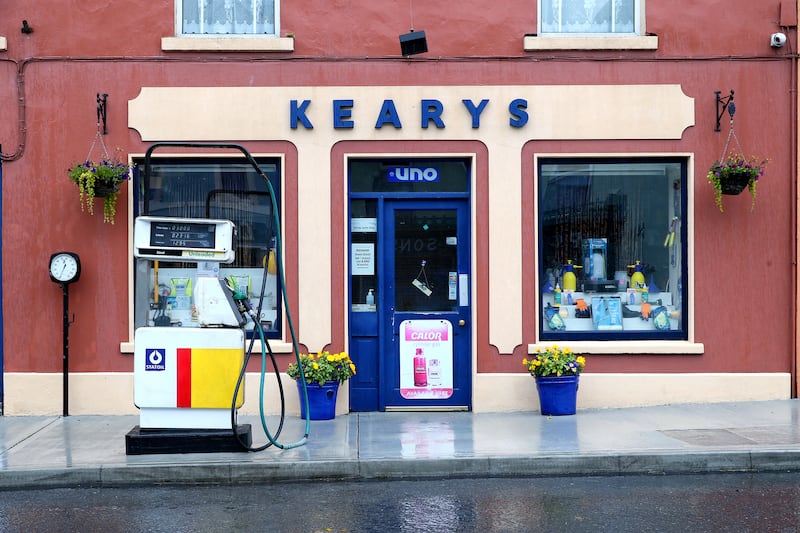
Perhaps even the days of the Applegreens and Circle Ks are numbered though, with the Government announcing last year that the sale of petrol vehicles will cease in 2030.
It is a changing world as Fitzy Chadwick, the owner of an immaculate little station in Borrisoleigh in Co Tipperary, knows only too well.
“My father opened this place in 1948, and his name is still above the door,” he pointed out to me last summer.
Fitzy keeps the old place immaculate, the shelves stocked with as many components as would build a new car. But he knows his days by the roadside may be numbered.
“Who knows how things will go, but I’ll sail about as long as I’ve my health,” he says with a sad smile. “Then it will be for the birds. I’ll leave the door open and they can fly in and out as they please.”
Stephen Davison’s photographs
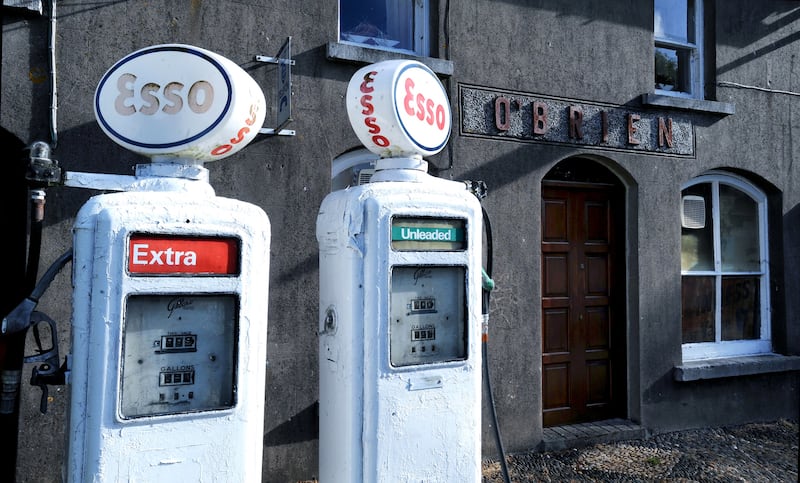
This was the first station I photographed, back in 2010. Something about O’Brien’s old shop near Millstreet in Co Waterford – the sign above the door, the way the premises was spread across both sides of the little country road and, most of all, the Dalek-like old pumps – made me stop to begin a strange love affair.
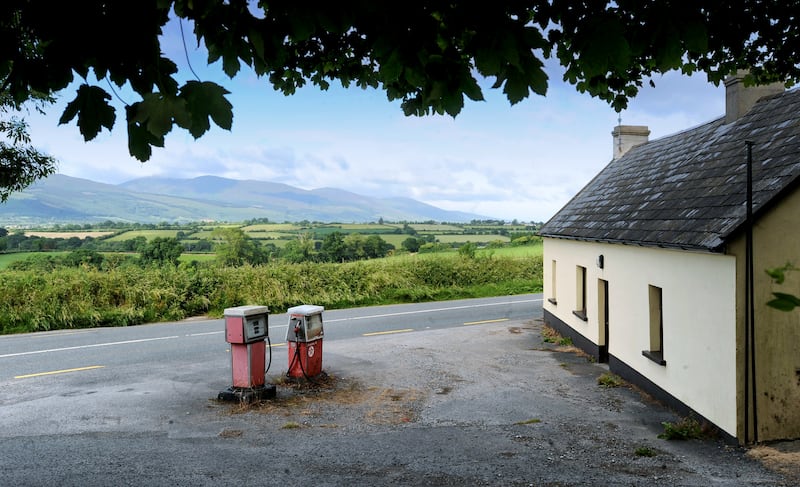
Incredibly, these old pumps and cottage are just a few miles up the road from O’Brien’s shop. I stumbled upon them as I headed north. Stark and simple, this way station on a lonely road provided fuel for travellers on their journeys. Coupled with the beautiful vista, they seem to speak of the romance of the Irish road.

I was quite happy I found Kearys, in Woodford, in Co Clare, on a wet and miserable Sunday. The hardware store was shut, and no cars were parked in front of the shop – one of the greatest frustrations I encounter in my filling-station hunts.
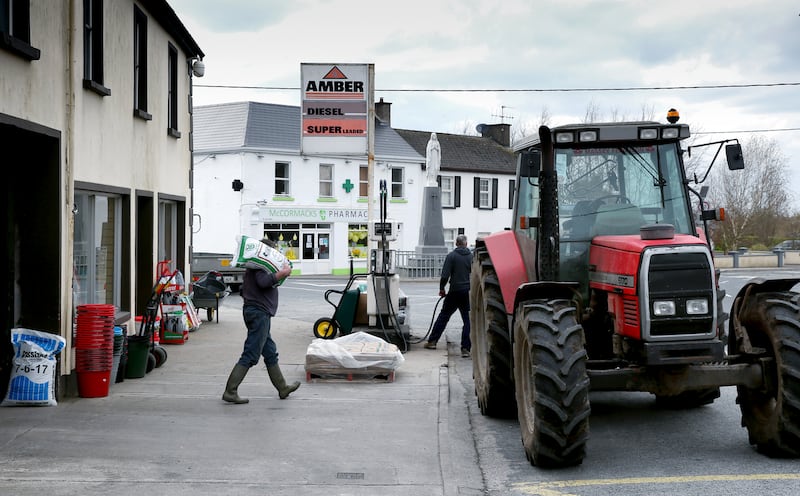
I usually try to photograph the stations without any people or vehicles present, but as the pumps are part of an agricultural supplier’s at this shop in Ballylanders, in Co Limerick, there was never a moment during the time I was there that farmers were not coming and going as Mary watched over every movement.
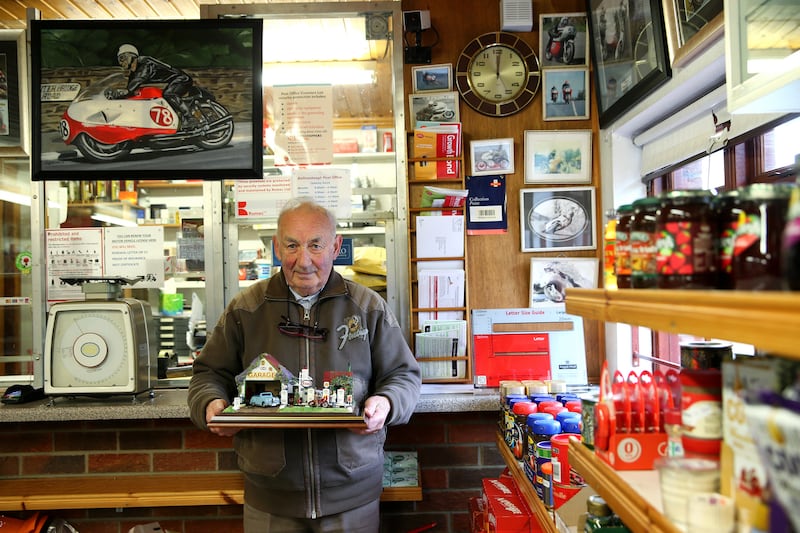
Seventy-five-year-old Eric Toal runs the family shop, post office and filling station in Glasker, in Co Down, that his father bought in the 1940s. Eric's son Geoff, who bought his dad this model station as a birthday gift, now helps run the business.
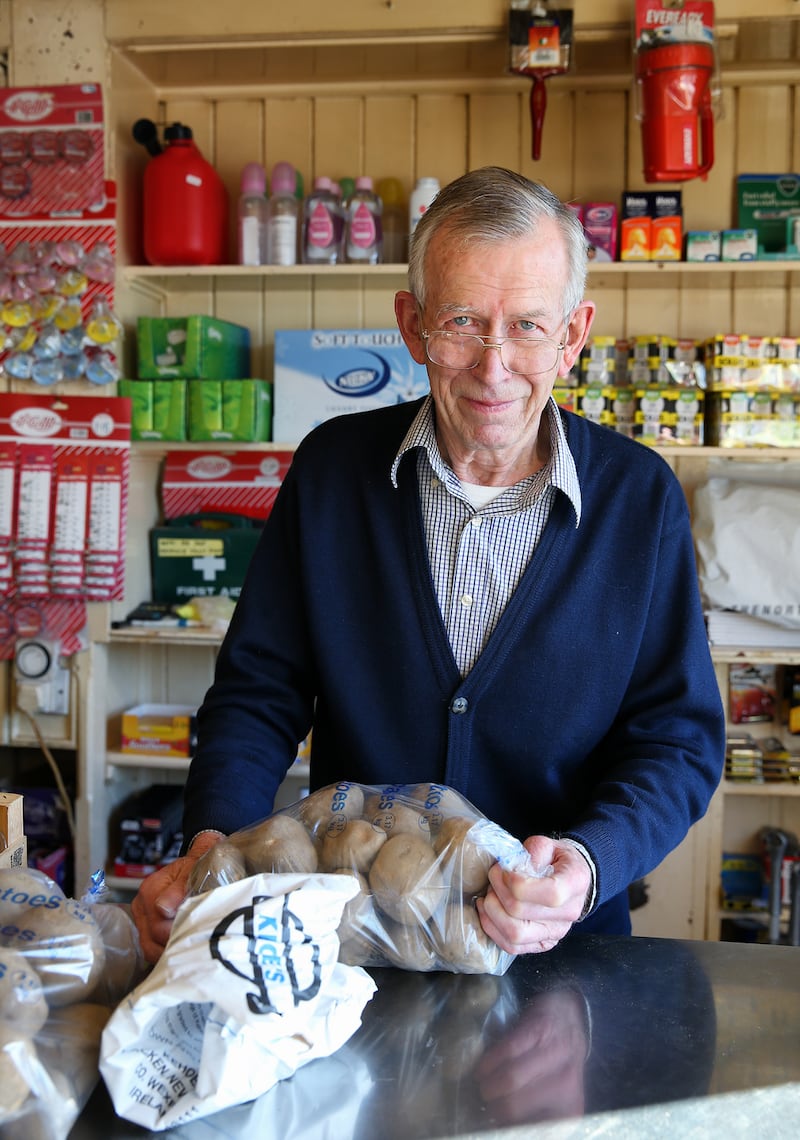
Pierce O’Dwyer, the proprietor, has been bagging potatoes by hand and serving petrol at his Ormond Stores filling station and shop, near Kilsheelan, in Co Tipperary, for more than 40 years.
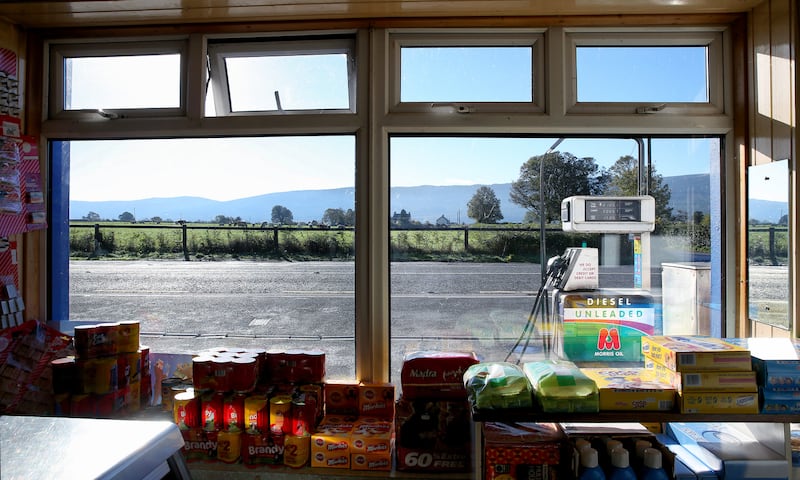
The Comeragh Mountains through the roadside window of Pierce O’Dwyer’s filling station and shop.

This station was closed when the patriotically coloured pumps caught my eye on Achill Island in the summer of 2017. When these small businesses shut their doors it isn't just fuel the local community is deprived of in remote locations like this. The food store, pub or hardware shop that often accompanies them disappears too.
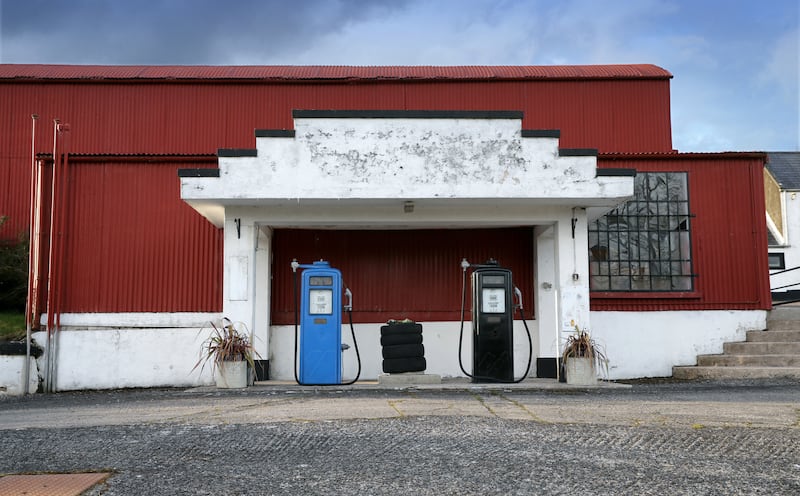
I used to pass this place in Moorfields, in Co Antrim, every day on my way to school. It is a long time since the pumps served fuel, but they have been immaculately restored, and you will often find newlyweds pulling up alongside, to be photographed pretending to fill up their limousines.
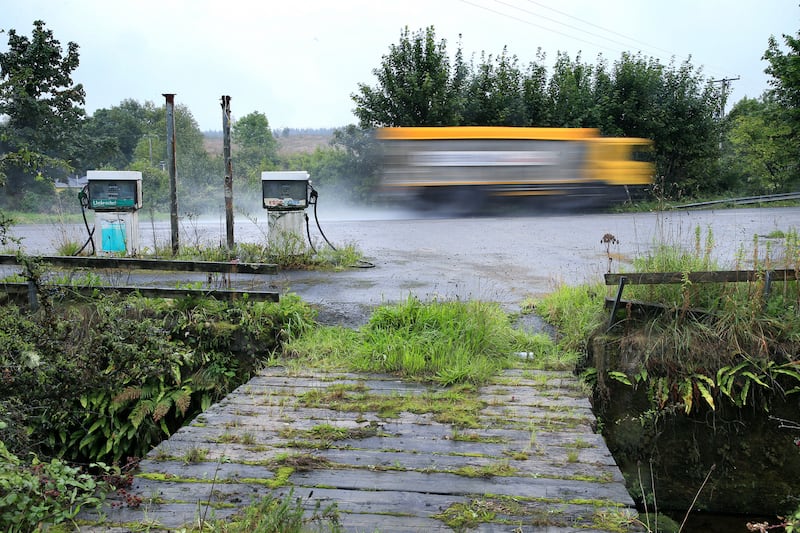
A speeding truck kicks up spray as it passes two old pumps, all that remains of this station near Birdhill, in Co Tipperary. Some parts of Ireland have many more of the old-style filling stations than others. Tipperary and Cavan were two of the best hunting grounds; Kildare bore little fruit.
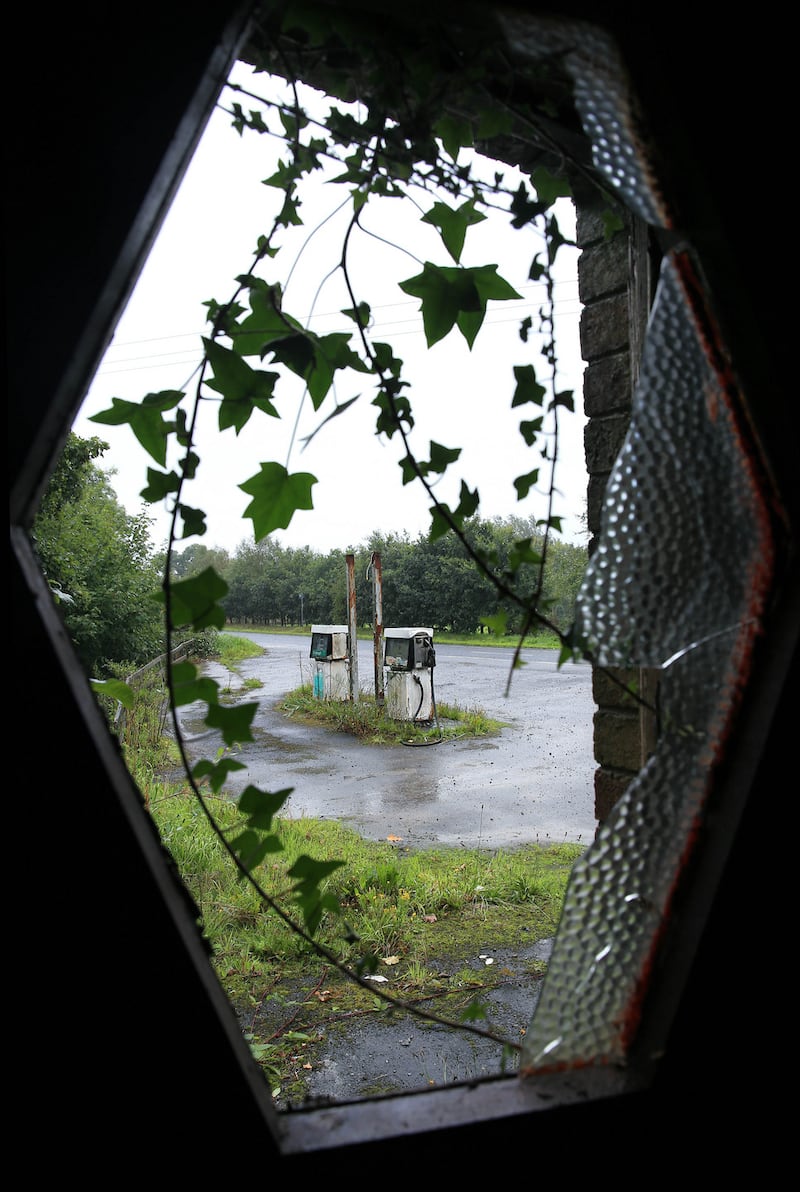
Seen through the broken toilet window, the same dilapidated station had been ravaged by vandals.
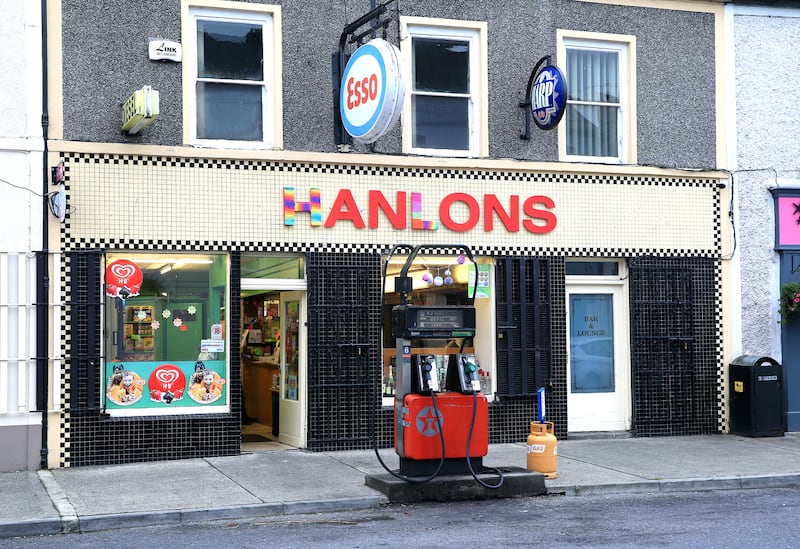
Hanlons in Mountmellick, in Co Laois, is more than 70 years old, although the petrol and diesel pump is much newer. The mix of traditional and psychedelic signage caught my eye. In the North it is no longer legal to sell petrol on the footpath like this, because of the fire danger.
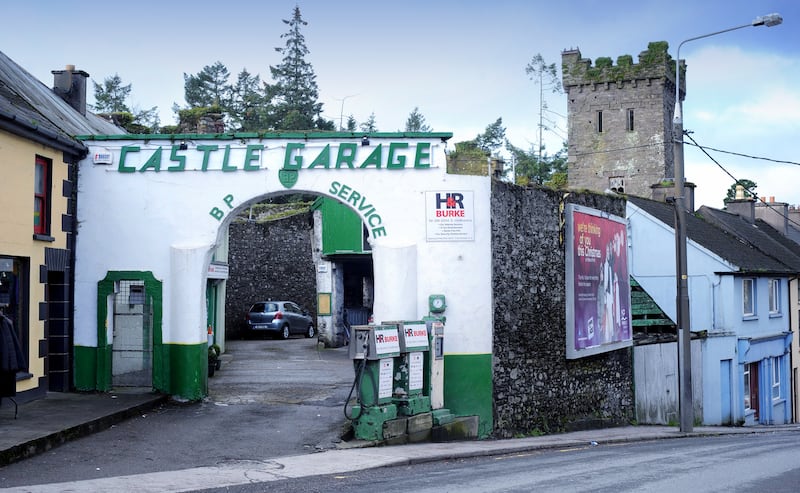
This old station in the shadow of the castle in Macroom, in Co Cork, has seen a variety of uses in its time. In the decade I have been documenting the stations, I have increasingly tried to capture them in the area that surrounds them.
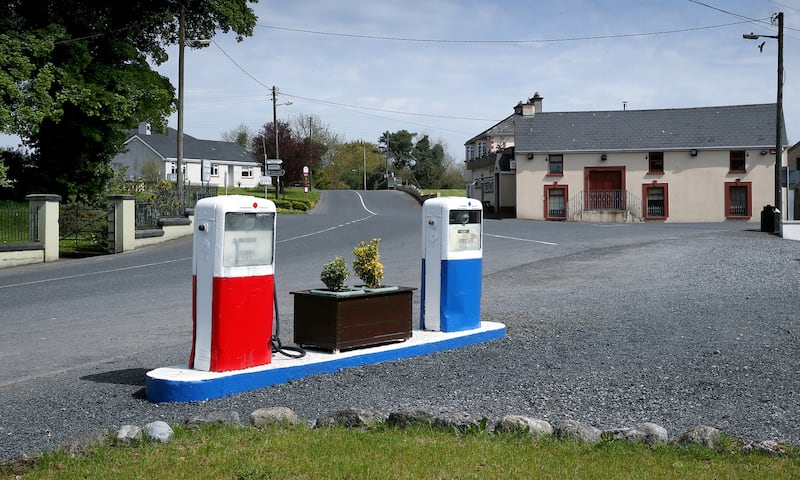
These colourful pumps in Raharney haven't been used for more than 25 years but are an eye-catching feature that have helped the Co Westmeath village become a Tidy Towns winner.

Pumps like this Shell one, in Mountshannon, Co Clare, are maintained in lots of places as part of the village furniture.
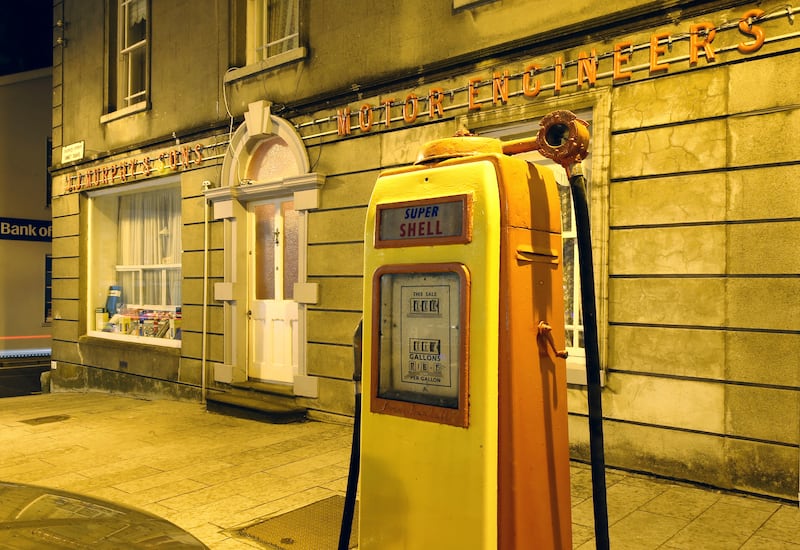
JJ Murphy & Sons Motor Engineers, on Emmett Square in Birr, in Co Offaly, is a well-known listed building with two lovely period pumps outside.
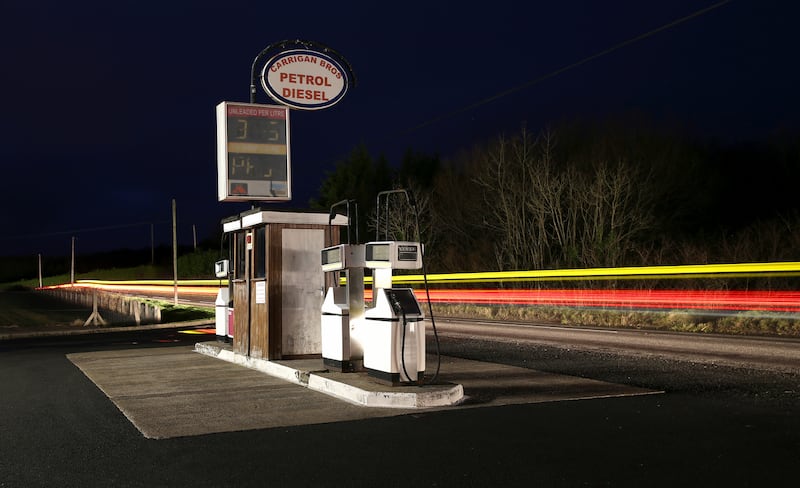
These disused pumps stand beside the road between Enniskillen and Belcoo, in Co Fermanagh. I took the picture at night, to catch the trace of the passing traffic. The yellow streak comes from the roof light of a taxi.
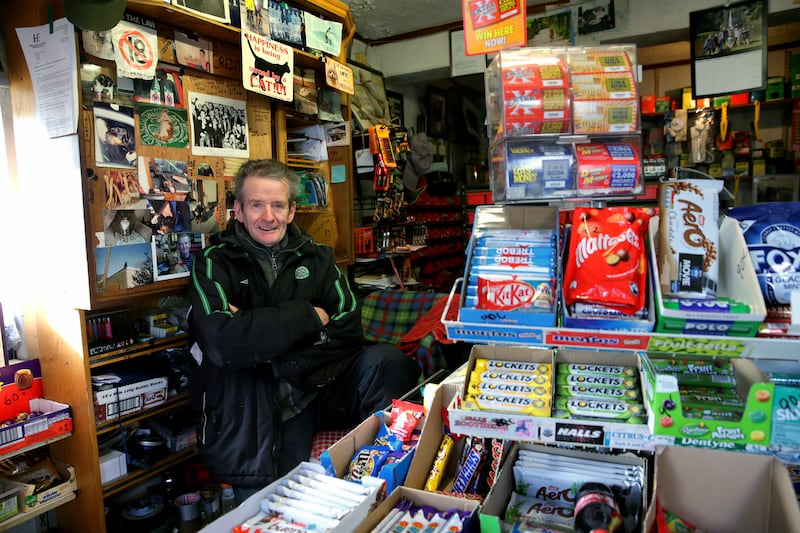
Jim Barker at his shop and former filling station in Rathmullan, in Co Donegal, on a quiet Sunday. “The pumps were open from 1972 until 2012, but it’s just the shop now,” Jim explained. There didn’t appear to be a roaring trade for the avid Celtic fan, but Jim said he preferred to be in the shop rather than his home. “I don’t do well in the house. I can’t sit still.”
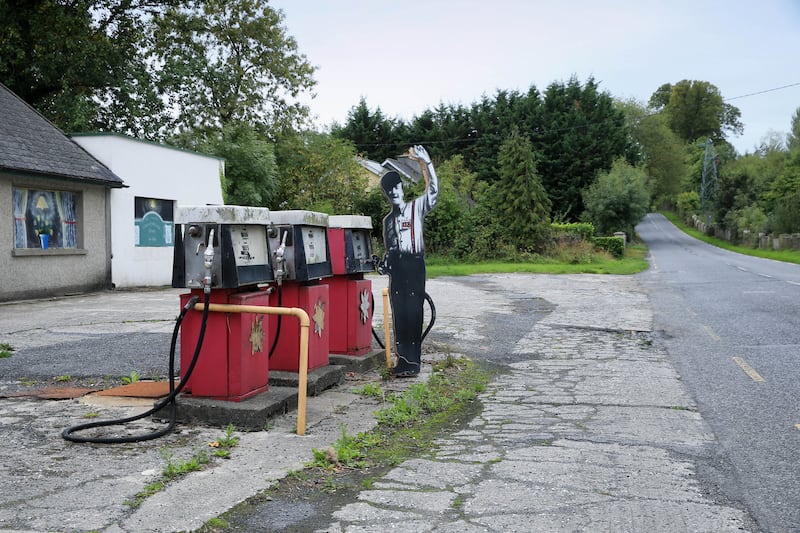
A friend who knows I photograph the old filling stations takes a picture and sends it to me when he comes across one. “Have you got this one?” he always asks. When he sent me this one recently I replied that it was right outside the hospital in Kilcreene, in Co Kilkenny. A little sad that I knew that, perhaps. Nerdy, definitely.
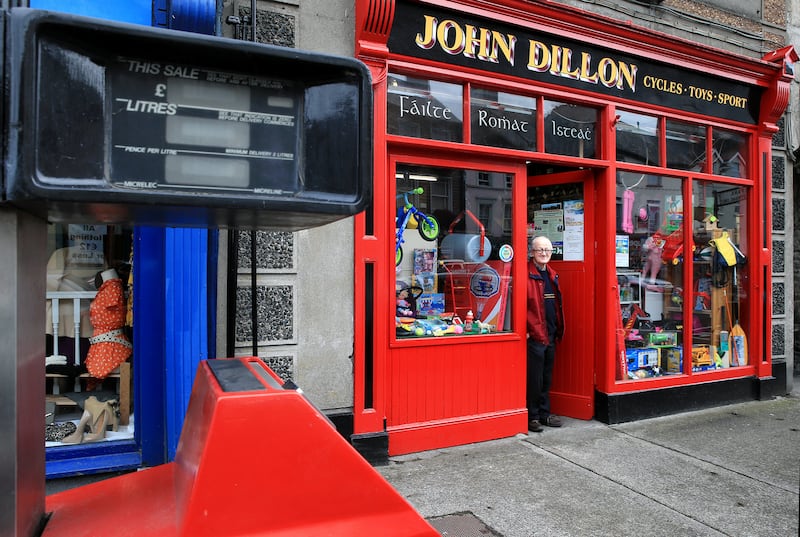
“I couldn’t stop people from parking in front of them,” John Dillon explained after quitting the petrol trade in his town-centre premises in Roscrea, in Co Tipperary. Dillon had run the business for more than 35 years. “Old people came in from the country and filled up on the same day each week,” he said. “I hated letting them down.”
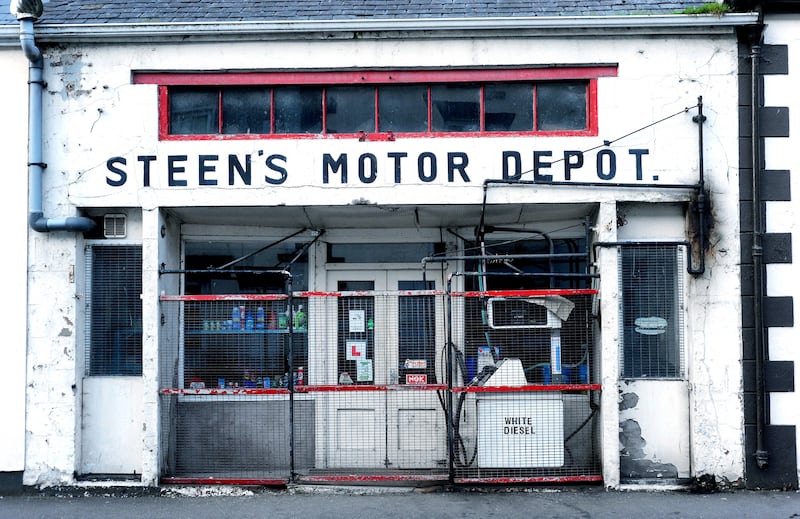
This old place was still operating in Newtown Hamilton, in Co Armagh, when I photographed it in 2012. Situated on the village’s narrow thoroughfare, it has closed since.
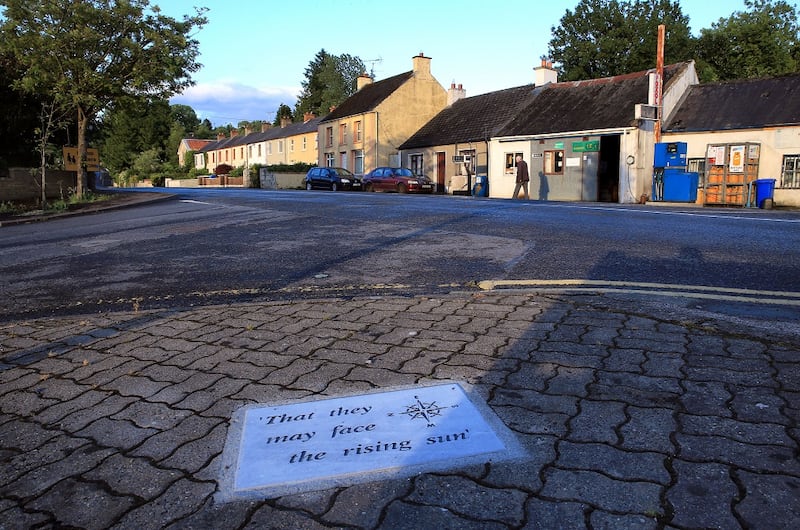
With barbed wit and acerbic humour, the patrons of the pubs in Ballinamore, Co Leitrim dubbed the proprietor of this filling station the Shah. John McGahern made this place famous in his novel That They May Face the Rising Sun. I would love to think that McGahern, a champion of the small place, of ordinary life, would understand these pictures. That they would make him smile.


















